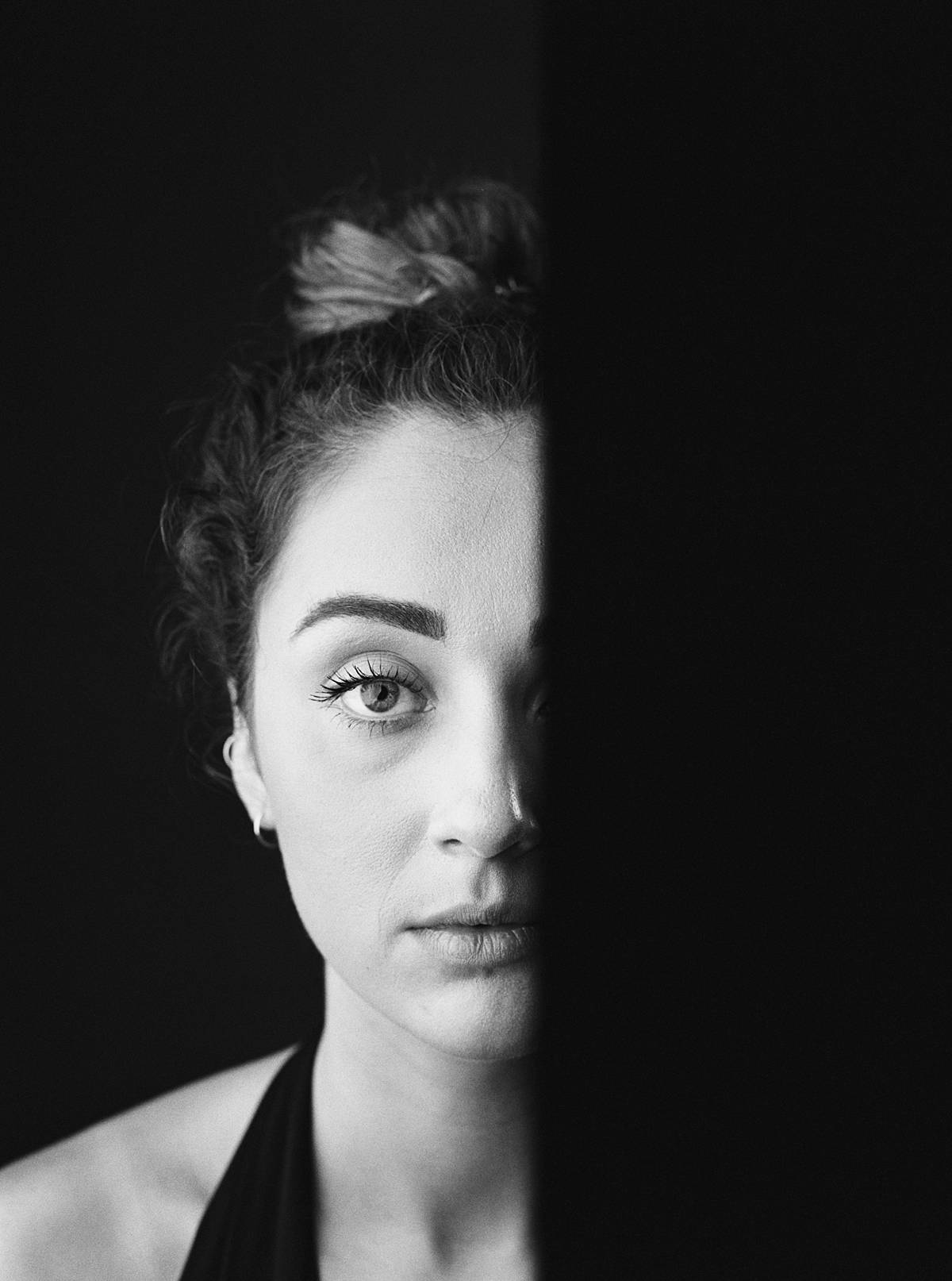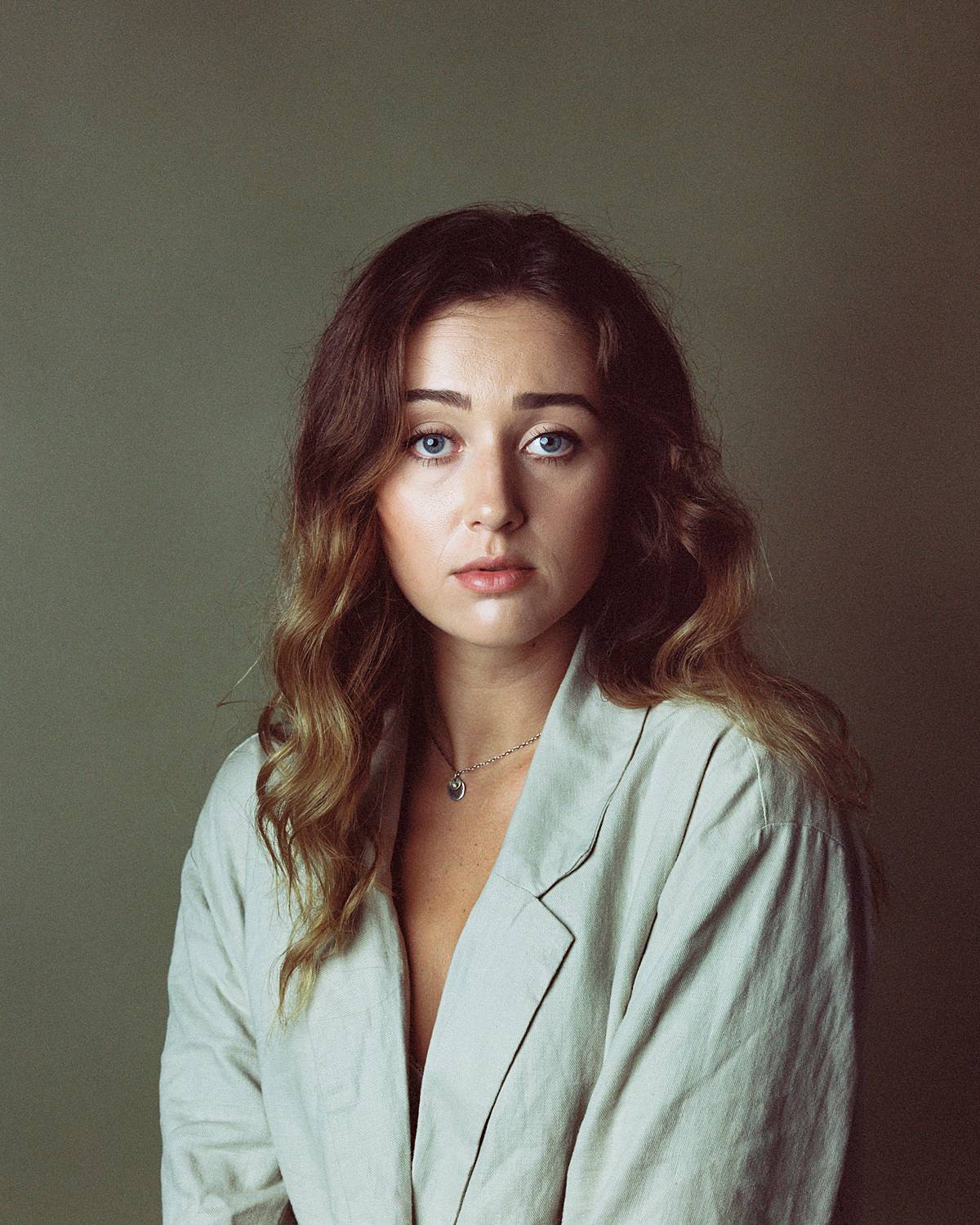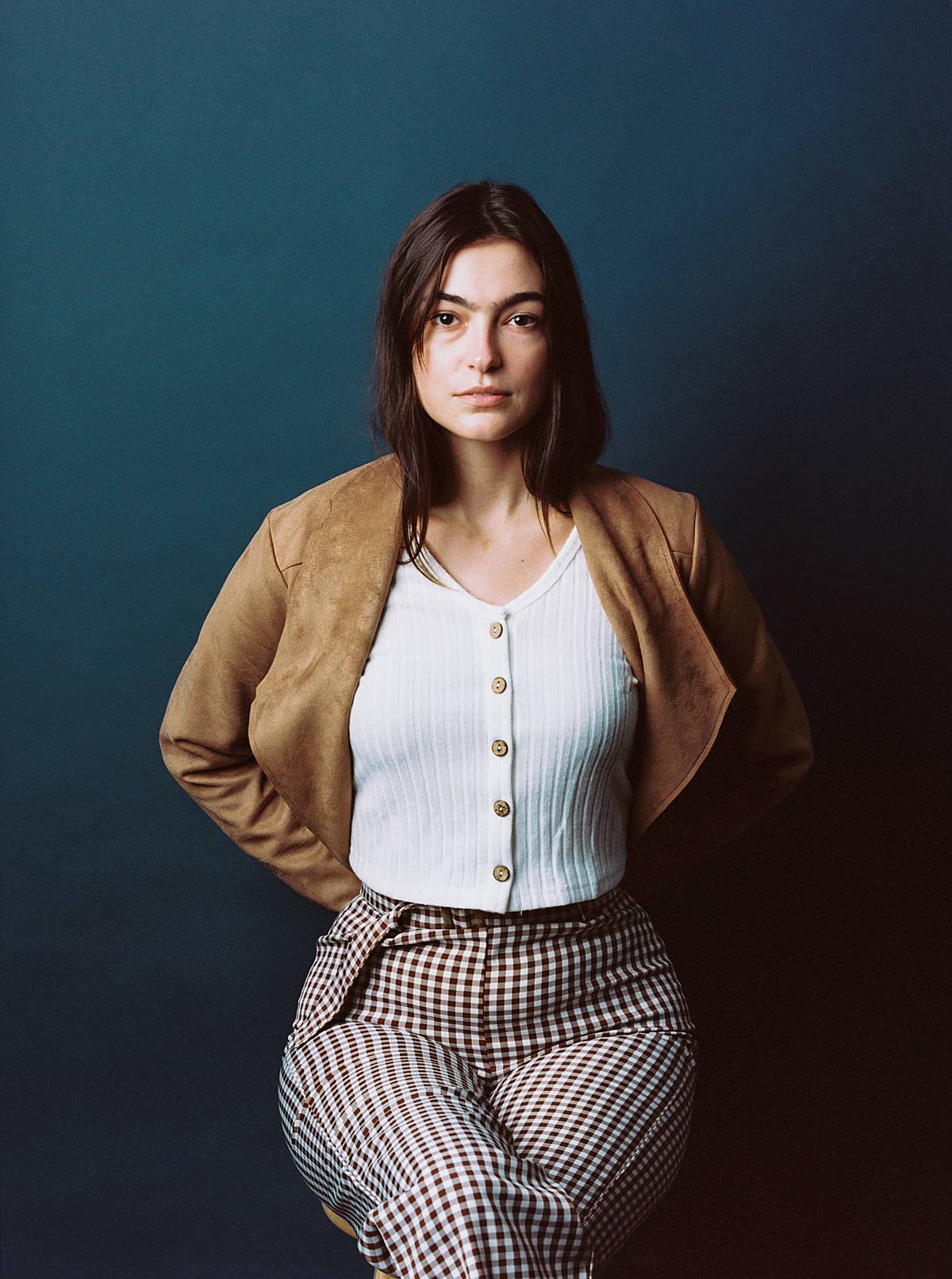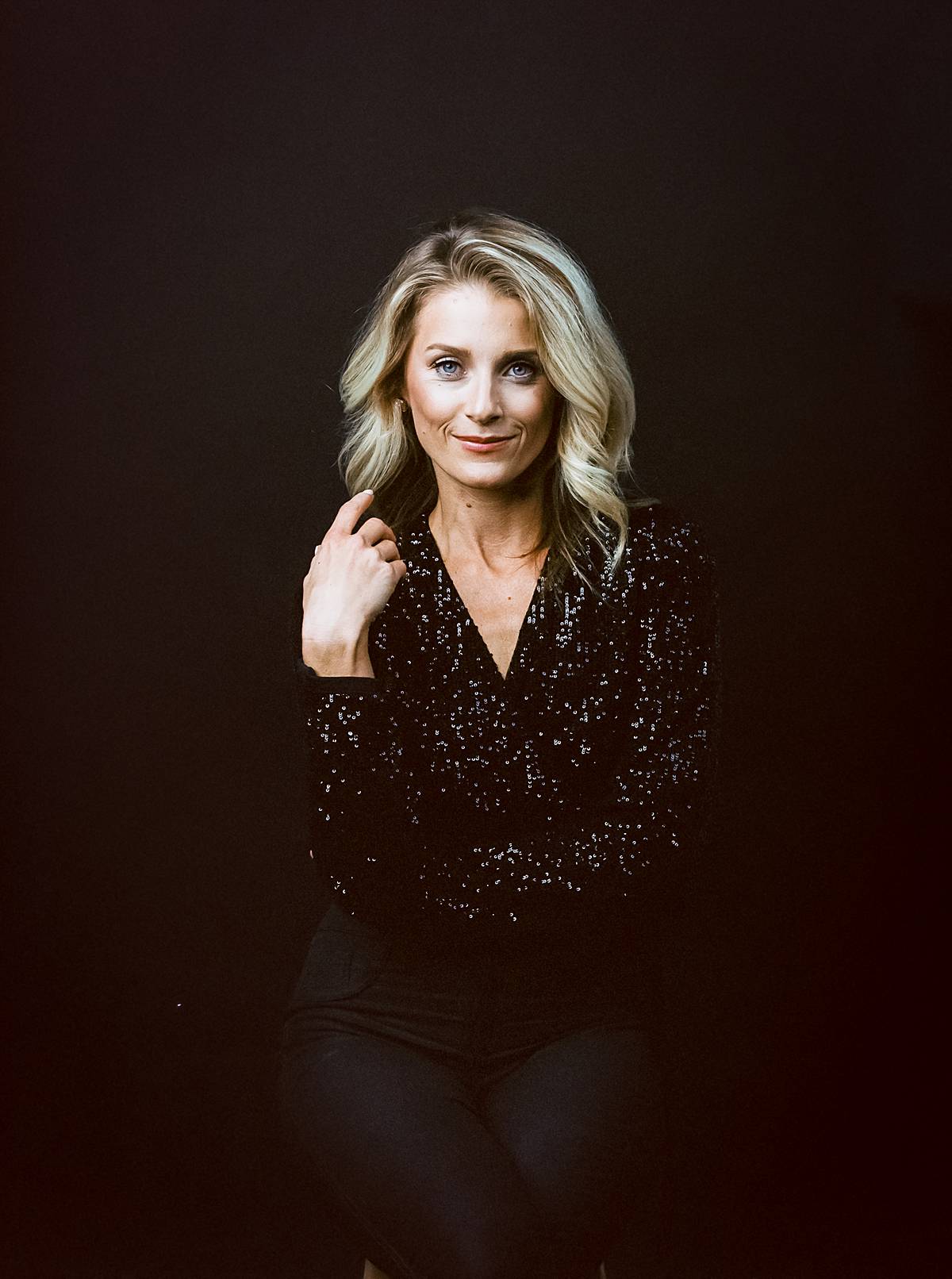Portrait and Lighting Tips for Shooting Film with Strobes in Studio

Portrait and Lighting Tips for Shooting Film with Strobes in Studio
Sept. 14, 2020, 9:15 a.m.
Why I Photograph Studio Portraits with Film and Strobes
To be perfectly honest, I started shooting strobes with film because I didn’t know anyone that was doing it. All of the studio film work that I had seen was all window lit, and largely from the side. It was all very beautiful, but I craved something with more shadows, depth, and drama. Right around the time I began experimenting with studio strobe work and digital cameras, I loaded up a roll into my Hasselblad H1 and shot my first ever studio strobe portrait on film. The subject was my grandfather – the man I admire most and the very person who started my film journey by gifting me his old Zeiss TLR. The portrait was a success. I shot it on Kodak TMAX 400 film. It wasn’t perfect. It had deep blacks and bright whites, but not a lot of tonality. All that being said, it was brilliant. I was hooked. I soon-after sold the Hasselblad and didn’t attempt strobes in studio again until the following year, when I picked up a Contax 645. My first attempt with the Contax wasn’t quite so successful. I recklessly assumed the sync speed was 1/125 of a second and got back 2 rolls from the lab with the shutter curtain covering half the frame. This is the biggest risk with film and strobes but once you refine a process and you stick to it, the results are just as consistent and predictable as shooting film in natural light.

Natural Light Film Portraits in Studio Are Cool Too
Studio portraits with natural light can be cool too. I don't mean to say that I never shoot natural light in studio, I'm just more often frustrated by the lack of ability to control the light and often find the intense highlights reflected off seamless paper backdrops to be distracting. You need such large and tall windows in a studio for natural light to be flattering and soft, that it often is easier to just master strobe lighting.

The other downside is you lose all ability to creatively isolate your subject from the backdrop with natural light. This means any imperfections in your backdrop will be visible and with seamless paper that isn't fresh out of the box, this means lots of photoshop work.
How I Shoot Studio Portraits with Strobes and Film

My Process for Consistent Results on Film for Studio Portraits
My process is consistent nearly every time I shoot. I try and use the same lighting setup, partly to establish an identity for my portraits, but likewise to ensure predictability in results. I set up my lights, in an approximate position, recalling how I had them setup previously. I started taking photographs with my phone of my lighting setups each time I shoot to make it quick to replicate on my next project. I darken the room as much as possible and use the modeling lights on the strobes to try and dial in the height and angle of the lights. The modeling lights on most strobes aren’t bright enough to fully dial in the lighting unless the room is almost fully blacked out. I don’t have this convenience, as my studio is setup in a shared living space, so I get it as close as I can and then I shoot digital to tweak it to perfection. As a quick side note, I often ask myself if shooting film in studio is really necessary when I am getting everything set up using digital anyway. I always edit a few digital shots right after each shoot and am always pleased with the results. I’ll say, however, that the reasons for shooting film in natural light still apply to studio strobe work. There is such a vast tonal range in shadow transitions and the depth and texture of skin tones is just far superior on film. There are other reasons that I like to shoot film in studio and I’ll touch on those later.

Ignore the dog butt. The large modified on the right edge is my key light and the tall, smaller modifier is my fill light. It's positioned just high enough to avoid a second catch light in my subject's eyes. I find 2 catch lights to be really distracting and unnatural in portraiture.


Camera and Lighting Settings for Contax 645 Studio Film Portraits with Strobes
First, I’ll cover camera and light power settings. My film speed (iso) is fixed, between 100 and 400 depending on which stock I am using. The whole point of shooting strobes is to have full control over your light direction and quality, so you want to set your camera settings to kill all ambient light. This means high aperture. I am typically shooting around F8-F13 in studio. Obviously, this all requires a strobe powerful enough to expose the film properly. My key light strobe is typically firing at ¼ power during my studio portraits. This is powerful enough to allow for a high aperture, but not quite at full power so I can fire in quick succession if needed be without exhausting the strobe. The Contax 645 has a setting specifically for strobes. On the mode dial, set the camera to “X”. All this does is set the shutter speed to a default of 1/90s. The strobe light peaks so quickly that it exposes the frame well faster than the 1/90s – somewhere closer to 1/1000s. The 1/90s is just used by the camera to make sure it can adequately sync the front and rear shutter curtains around the triggering of the strobe. Now, you can see why we want a high aperture. If the camera shutter is firing at 1/90s, we would likely pick up some ambient light at low apertures, even with a low speed film. I trigger the strobes using the brand’s wireless hot shoe trigger meant for canon cameras. This just happens to be the one that fits the Contax 645’s flash shoe. All flash powers are set manually on the trigger – more on that later. I highly recommend test firing the strobes with the camera before you load film in. However, if you forgot to test fire and you already loaded film, there is a hack. I set the camera to multiple exposure mode, and put the lens cap on! I can fire away without exposing the frame.

I follow a few basic lighting principles to achieve my signature look:
1) I use the largest, therefore softest, modifier on my key light that I can fit in my studio space.
2) I place my subject as close as possible to the key light without the light modifier entering the camera field of view.
3) I use a fill light to soften the shadow side and typically set it’s power 3 stops lower than the key light.
4) I position the key light as high as possible while still being able to see the light catching in the subjects eye. The second that catch light disappears, I know I’ve gone too high.
I tend to create a Rembrandt or loop lighting pattern with the key light, meaning the light is angled down and to the side such that the shadow of the nose is either connected to the shadow of the cheek or there is a small gap between.

Film Camera and Lighting Gear For Studio Portraiture
I do shoot with other film cameras in studio, some with strobes and some without, but for studio protraiture on film with strobes, this is my go to kit. The 140mm F4 macro lens allows me to shoot a tighter crop which is flattering for portraits and let's me use more narrow seamless paper backdrops.
Equipment Used
1) Contax 645 + 140mm F4
2) Godox AD600 Pro TTL
3) 2 x Godox AD200
4) Godox Xpro Canon Wireless Trigger
5) Sekonic L-558 Light Meter
6) Wescott 48” Rapid Box Octabox
7) Glow Parapop 28” Softbox

My Favorite Light Modifiers for Studio Strobe and Flash Portraiture
I tend to prefer softboxes over umbrellas because they produce a soft, beautiful light pattern that still creates contrast and shadows and keeps less light from spilling onto the backdrop and surrounding walls. My key light is typically a large octabox. I always start off by only turning on the key light. I set it’s position and power, then add the fill light to recover some shadows. I find the that ideal key light position seems to be about 30 degrees off center to the right or left and 45 degrees off vertical, pointing down at the subject. The further down you angle the light, the more the nose shadow will dip. If the nose shadow starts to run too far down the face, I find that it becomes unflattering. Also, remember to keep an eye on that catch light in the eye. Once the key light is too high, the eye no longer reflects it’s light and they tend to be dark and without character. Angling the key light further to the left or right will lengthen the nose shadow until it connects to the cheek shadow and becomes Rembrandt lighting. This is a universally flattering, male or female, lighting pattern but is a bit more dramatic than your standard loop lighting. I then position my fill light high and to the opposite side of the key light. I position it high enough so that it doesn’t create a second catch light in the eye, as this tends to look unflattering. I tend to angle my fill light further to the side than I do my key light, since it won’t be casting a shadow and I like a bit of the light to wrap around onto the backside of the head/hair.


How to Meter Flash With Film and Strobes
The last technical bit to cover is metering. I use my digital camera to dial in the light positions and the relative power of the key and fill lights. I then meter the flash with my light meter, and always trust the result it gives me. It has never steered me wrong. My Sekonic L-558 has a mode for reading flash power. You press the button, then trigger the strobes, and the light meter tells you which aperture to set the camera to for proper exposure. You can either adjust your flash power until the light meter reads the aperture that you desire, or you can adjust the aperture to work with the current flash power. If you decide to adjust the flash power instead of aperture, be sure to adjust the key and fill light by the same amount. I find that my light meter consistently reads 1-1.5 stops lower than what I adjusted everything to with the digital camera. I trust it’s reading and adjust my flash power to suit!



Why Studio Strobes with Film Became my Signature Portrait Look
Shooting film in studio consistently gives me the look I want and I find that it makes me shoot less and have more quality images. There are times when shooting digital is preferred, notably when there is a lot of subject movement as I am manually focusing. Whenever I want those slow and dramatic portraits, however, I always turn to film. The colors and the depth and tonal range in the shadows just gives a portrait so much character. It’s something I’ve never been able to replicate with digital cameras. I also like how film makes you think a bit more about the resultant image ahead of time, as there is less flexibility in editing and the film stock selection is so influential on the outcome. All of the portraits in this article were shot on 15 year expired Kodak Portra 160VC. I have built a small portfolio around that look. Kodak films tend to gain some red tint in the shadows when they become expired, and I love the subtle character this adds to the portrait. There is something romantic in its imperfection. Shooting expired films is a bit risky, as the results are often unpredictable, but some skillful editing can often recover significantly fogged film in post.
What I Love About Studio Portraiture
I find myself shooting more film in studio than I do outdoors these days. Shooting in studio is an opportunity for me to slow down, build into an image, and be intentional with every single detail that fills the frame. From the colors, to the styling, to the film stock, to the subtle changes in the lighting angles; everything is intentional. Film as a medium seems to fit this mentality and process so effortlessly. The biggest advice I could give in shooting studio portraits, particularly on film when the results aren’t immediately visible, is to take your time and really fine tune your lighting. Keep making those minor adjustments until the angles, the highlights and shadows are perfect. I’ve gotten pretty quick at replicating the general light pattern I use, but every subject and mood is different. Sometimes I’ll spend 20-30 minutes just tweaking the lighting, adding reflectors, and moving the subject closer to or further from the backdrop. The end results have been some of my most rewarding images of my short photography career. I tend to be drawn to more dramatic portraiture and the combination of film and studio lighting has proven to be the perfect environment and medium to create something from scratch that feels so distinctly mine.
Click Here to See More Studio Portrait Work on my Blog
More Camera Reviews, Photography Tips and Helpful Articles on the Blog
For Photographers - Brian D Smith Photography Film and Education Blog
Learn more about my Charleston SC Portrait Photography Studio
Brian D Smith Charleston SC Portrait Studio - Studio Sixty Reid
~~ ~~
If you are inspired by what you read, I'd love to invite you to reach out about the photography services I offer. My guarantee is that you won't find a photographer that cares more about you and your story than I. I'm endlessly passionate about telling stories on film and pushing the boundaries of art in editorial, lifestyle and portrait photography. I operate a photography studio in Charleston SC and Traverse City Michigan. I'd be thrilled to work for you and document your story, wedding or business in Charleston South Carolina, Northern Michigan, or any destination abroad. LGBTQ supporter and firm believer in the cause for all races to fight for equal rights.
If you'd like more info about this post, would just like to chat, or are ready to book, reach out to me by visiting my contact page here!
Contact Film Studio Portrait Photographer Brian D Smith Photography















